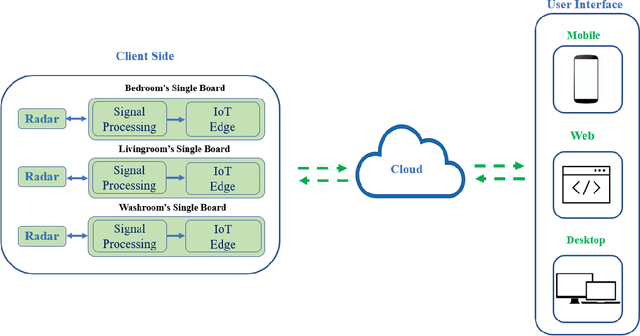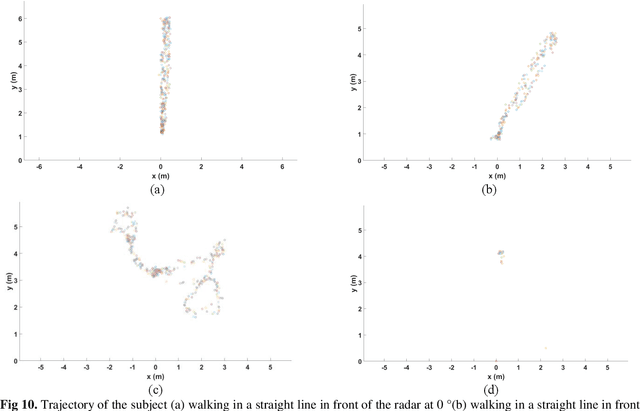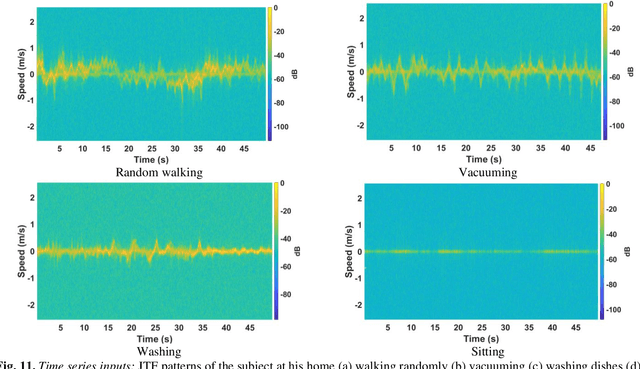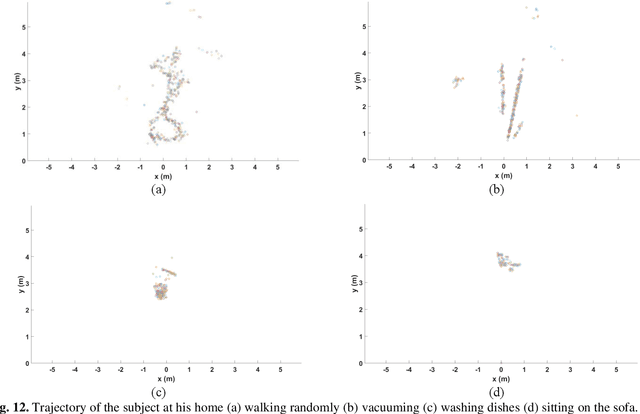George Shaker
RAPTAR: Radar Radiation Pattern Acquisition through Automated Collaborative Robotics
Jul 22, 2025Abstract:Accurate characterization of modern on-chip antennas remains challenging, as current probe-station techniques offer limited angular coverage, rely on bespoke hardware, and require frequent manual alignment. This research introduces RAPTAR (Radiation Pattern Acquisition through Robotic Automation), a portable, state-of-the-art, and autonomous system based on collaborative robotics. RAPTAR enables 3D radiation-pattern measurement of integrated radar modules without dedicated anechoic facilities. The system is designed to address the challenges of testing radar modules mounted in diverse real-world configurations, including vehicles, UAVs, AR/VR headsets, and biomedical devices, where traditional measurement setups are impractical. A 7-degree-of-freedom Franka cobot holds the receiver probe and performs collision-free manipulation across a hemispherical spatial domain, guided by real-time motion planning and calibration accuracy with RMS error below 0.9 mm. The system achieves an angular resolution upto 2.5 degree and integrates seamlessly with RF instrumentation for near- and far-field power measurements. Experimental scans of a 60 GHz radar module show a mean absolute error of less than 2 dB compared to full-wave electromagnetic simulations ground truth. Benchmarking against baseline method demonstrates 36.5% lower mean absolute error, highlighting RAPTAR accuracy and repeatability.
* 8 Pages, IEEE Journal
Exploring FMCW Radars and Feature Maps for Activity Recognition: A Benchmark Study
Mar 07, 2025



Abstract:Human Activity Recognition has gained significant attention due to its diverse applications, including ambient assisted living and remote sensing. Wearable sensor-based solutions often suffer from user discomfort and reliability issues, while video-based methods raise privacy concerns and perform poorly in low-light conditions or long ranges. This study introduces a Frequency-Modulated Continuous Wave radar-based framework for human activity recognition, leveraging a 60 GHz radar and multi-dimensional feature maps. Unlike conventional approaches that process feature maps as images, this study feeds multi-dimensional feature maps -- Range-Doppler, Range-Azimuth, and Range-Elevation -- as data vectors directly into the machine learning (SVM, MLP) and deep learning (CNN, LSTM, ConvLSTM) models, preserving the spatial and temporal structures of the data. These features were extracted from a novel dataset with seven activity classes and validated using two different validation approaches. The ConvLSTM model outperformed conventional machine learning and deep learning models, achieving an accuracy of 90.51% and an F1-score of 87.31% on cross-scene validation and an accuracy of 89.56% and an F1-score of 87.15% on leave-one-person-out cross-validation. The results highlight the approach's potential for scalable, non-intrusive, and privacy-preserving activity monitoring in real-world scenarios.
AI-Powered Non-Contact In-Home Gait Monitoring and Activity Recognition System Based on mm-Wave FMCW Radar and Cloud Computing
Aug 11, 2022



Abstract:In this paper, leveraging AI, cloud computing and radar technology, we create intelligent sensing that enables smarter applications to improve people's daily lives.
 Add to Chrome
Add to Chrome Add to Firefox
Add to Firefox Add to Edge
Add to Edge